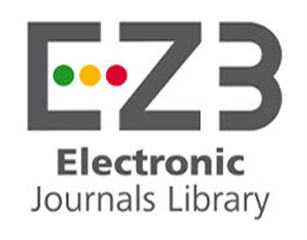MAKING A MANAGERIAL DECISION IN THE CONTEXT OF INTERACTION OF COLLECTIVE CONSCIOUS AND UNCONSCIOUS IN CONDITIONS OF A DYNAMIC ENVIRONMENT
DOI:
https://doi.org/10.32689/2617-2224-2021-1(26)-152-171Keywords:
collective conscious, unconscious, archetypes, managerial decision, public administration, system, environment, balanceAbstract
The article considers making of managerial decisions based on the analysis of interaction of collective conscious and unconscious in a dynamic environment. Collective conscious and unconscious represent divergent and convergent processes in thinking. Collective consciousness has a reflection that provides feedback and new ideas. Collective unconscious resists changing and stabilizes the social system. The results of the analysis of interaction of collective conscious and unconscious in a dynamic environment show the following: this interaction is variable and depends on balance between the social system and the environment; it focuses on thinking that aims to preserve the system through its resistance or adaptation to the environment depending on the critical state of the social system. Also, the synergistic effect of coordinated work of elements of the social system can provide energy for change. In conditions of reduced balance, a metal part of the social system in the form of a set of archetypes as patterns of thinking may need to be revised to make decisions that will restore balance. Monitoring of interaction of collective conscious and unconscious is important for managing and planning of development of the social system. To determine this interaction, tools such as the coefficient of dynamic equilibrium, the methodical toolkit of socio-psychological thinking are proposed. Due to the fact that interaction of collective conscious and unconscious does not always correspond to the situation in which the social system is, there is a need to control this process. Therefore, the task of public administration is to create conditions in which interaction of collective conscious and unconscious in thinking will work to solve problems, rather than focus on outdated beliefs that do not contribute to appropriate managerial decisions. It can be done by immersing the social system in certain scenarios and using attractors that will initiate interaction in a desired direction. In general, public administration should create conditions that will make the social system “smart.” It can be achieved through the cooperation of the state authority with the civil society, decentralization and delegation of power from the state authority to the civil society, establishing trust and understanding based on a common goal and efforts.
References
Лейбин В. М. Словарь-справочник по психоанализу. СПб. : Питер, 2010. 960 с.
Узнадзе Д. Н. Экспериментальные основы психологии установки. Тбилиси : Изд-во Акад. наук Грузинской ССР, 1961. 210 с.
Jung Carl G. (1958). Psychology and Religion: West and East. Collected Works of C. G. Jung. Ed. by Gerhard Adler & R. F.C. Hull. (Vol. 11). Princeton, N.J.: Princeton University Press.
Jung Carl G. (1988). Man and his Symbols. New York: Doubleday.
Durand Gilbert (1992). The Anthropological Structures of the Imaginary. (M. Sankey & J. Hatten, Trans). (11th ed.). Brisbane: Boombana Publication.
Напльоков Ю. В. Ефективність публічного управління в умовах динамічного середовища : дис. … д-ра філософії з публічного управління та адміністрування : 281. К. : МАУП, 2020. 340 с.
Социальное бессознательное: социологический и социально-психологический аспекты / З. В. Сикевич, О. К. Крокинская, Ю. А. Поссель. СПб.: Питер, 2005. 266 c.
Суший О. В. Теоретичні засади соціальної архетипіки // Публічне урядування. 2016. № 3 (4). C. 168–180.
Афонін Е. Українське диво: від депресії до соціального оптимізму / Е. Афонін, А. Мартинов. К. : Вид. дім “Києво-Могилянська академія”, 2019. 296 с.
Naplyokov Y. V. (2014). An Algorithm for Maintaining Dynamic Equilibrium to Achieve Strategic Goals. Master’s Thesis. Carlisle, PA: U.S. Army War College.
Kotter John P. (2014). Accelerate: Building Strategic Agility for a Faster-Moving World. Boston: Harvard Business Review Press.
Naplyokov Y. V. (2018). The archetypal foundations of value choice in the process of adaptation to the modern societ // Public Management, 4 (14), 171–183.
Донченко О. А. Соцієтальна психіка. К : Наук. думка, 1994. 207 с.
Prigogine, Ilya & Isabelle Stengers. (1984). Order out of chaos. New York: Bantam books.
Haken H. (1983). Synergetics. An Introduction: Nonequilibrium Phase Transitions and Self-Organization in Physics, Chemistry and Biology. New York: Springer-Verlag.
Maffesoli M. (1996). The Time of the Tribes: The Decline of Individualism in Mass Society. London: SAGE Publications.
Субтельний О. М. Україна: історія / пер. з англ. Ю. І. Шевчук. К. : Либідь, 1991. 509 с.
Nicolis G. & I. Prigogine. (1977). Self-Organization in Non-equilibrium Systems: From Dissipative Structures to Order through Fluctuations. New York: J. Wiley & Sons.
Cambridge Dictionary. Retrieved from https://dictionary.cambridge.org
Суший О. В. Психосоціальна культура державного управління : монографія. К.: Світогляд, 2012. 344 с.
Афонін Е. А. Функціональна і компетентнісна готовність державних службовців України до здійснення публічного адміністрування в умовах демократії / Е. А. Афонін, О. М. Балакірєва // Український соціум. 2015. № 1. С. 7–22.
Суший О. В. Глибинні рифи українського націєтворення: архетипна програма конфлікту // Проблеми політичної психології. 2017. № 5 (19). С. 103–121.
Maslow A. H. (1970). Motivation and personality. New York: Harper and Row.











